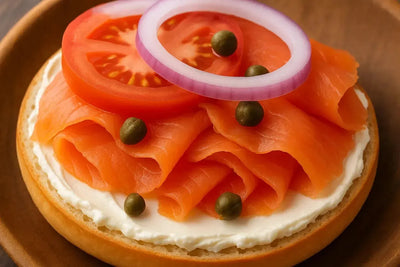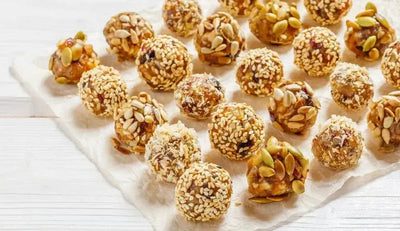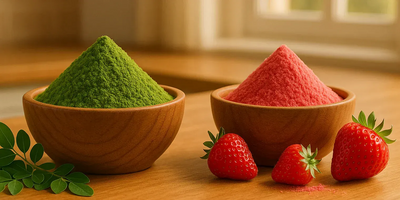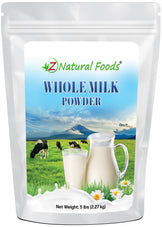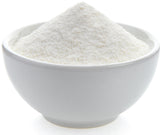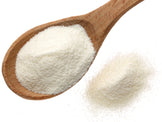Description
Description
Whole milk powder is a dairy product made by partially removing water from pasteurized milk through spray drying or roller drying.
The primary purpose of drying the milk is to extend preservation.
Due to the lack of moisture content, whole milk powder lasts longer, with a stable shelf life of up to 18 months. Whole milk powder does not require refrigeration and needs less storage space. It is easy to store, and the non-refrigerated shipping translates into convenience and savings. All these benefits are especially important when used for:
Whole milk powder can be manufactured by blending fluid provided the composition of the whole milk powder conforms to standard regulations.
According to the U.S. Food and Drug Administration, whole milk powder must contain:
- Lactose
- Milk proteins
- Milk minerals in relative composition to the milk from which it was made.
In addition, whole milk powder must have between 26% and 40% milkfat by weight.
Whole milk powder can be produced with or without protein adjustment. The protein level can be adjusted to a minimum of 34% in MSNF (Milk-Solids-Not-Fat) concentration.
As such, whole milk powder is nutritionally equivalent to fresh milk and can be used as a healthy long-life substitute in many recipes. It can also be used in reconstituted dairy products such as yogurts.
Is Whole Milk Powder the Same as Powdered Milk?
No, they’re quite different.
Powdered milk, or dry milk, is made by evaporating milk to dryness. The difference between whole milk powder and powdered milk lies in their nutritional composition. Regular non-fat dry milk contains (by weight) 36% protein and 52% carbohydrate with a mineral composition of 1.3% calcium and 1.8% potassium.
On the other hand, whole milk powder can have a varying composition of proteins, fat, and carbohydrates.
The average nutritional composition of whole milk powder is as follows:
The mineral content of whole milk powder lies between 5-7% and includes:
Like fresh milk, whole milk powder and dry milk are often fortified with Vitamin A and D. They also contain several amino acids such as threonine, alanine, valine, and cysteine.
How Do I Substitute Whole Milk for Powdered Milk?
In essence, whole milk powder provides the rich nutritional quality of dairy milk in a convenient form.
So, how do you go about using whole milk powder?
Usage: Add 4 tablespoons of whole milk powder to 1 cup water and mix. Use a blender for the best consistency. If your recipe requires 1 Quart of liquid milk, add 1 cup whole milk powder to three cups of water.
Beyond standing in for milk in various dishes, whole milk powder is convenient, especially if you love making all things rich, thick, and creamy. Add it to oatmeal, porridge, smoothies, or puddings for a rich, creamy consistency.
Here are a few ways you can use whole milk powder.
1. To Thicken Yoghurt
Add ½ to 1 cup whole milk powder to every gallon of milk you’ll use. Stir the milk powder into warm milk until it’s completely dissolved. Then you can add the yogurt culture. After mixing the culture in, rest your ingredients for about 12 hours overnight and wake up to some nice creamy yogurt.
Make sure to keep the ingredients warm. Use a container that will hold the heat and swaddle it in a blanket.
2. Pistachio Cardamom Nutella
For this recipe, you’ll need:
- 18 ounces white chocolate
- 9 ounces shelled unsalted pistachios
- 4 ½ ounces pistachio oil
- 3 ounces of whole milk powder
- 1 tablespoon honey
- ½ tablespoon orange zest
- ½ tablespoon of cardamom
- Toast the pistachios in an oven until slightly golden brown, then set aside to cool
- Use a food processor to grind the pistachios until powdered, then mix in the orange zest, ground cardamom, and whole milk powder
- With the processor still running, drizzle the pistachio oil into the mixture to create a smooth sauce
- Melt the chocolate and mix in the honey in a large mixing bowl
- Pour the pistachio mixture into the white chocolate and combine to create a thick spread
Use the spread as a breakfast topping on your toast, pancakes, or waffles. It also makes for one decadent dessert topping.
For Bulk inquiries and custom formulations click here: https://www.znaturalfoods.com/pages/bulk
